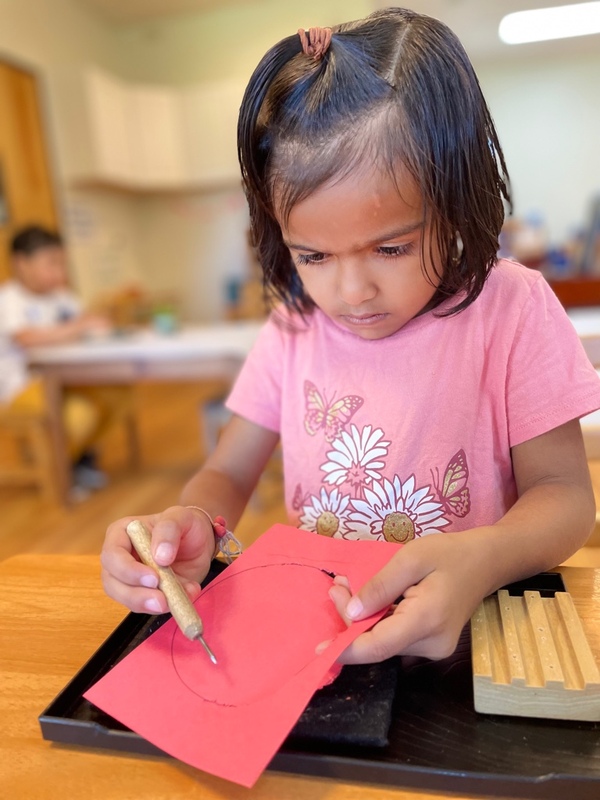(858) 759-0631
Sensorial-based education plays a crucial role in a child's development, and parents can actively support this process at home. This approach to learning emphasizes the engagement of a child's senses, fostering their cognitive, physical, and social growth.
Our classroom has four primary areas of learning: practical life, sensorial, math, and language. To Montessori guides, all of these areas are equally important, and we focus on each in your child’s time in our class.
The sensorial area of the classroom is where we have several scientifically designed and studied lessons intended to refine your child’s senses: smell, touch, taste, sight, and hearing. You might have seen photos from class of the pink tower—this sensorial material is designed to enhance visual and tactile discrimination (which cube comes next in the sequence from largest to smallest?), or you may have seen the sound cylinders—this material is designed to refine the auditory senses where children have to be hyper-focused to hear for differences in the sounds each cylinder makes. Some Montessorians describe the sensorial area as one that “teaches common sense” because not only have the materials been designed to refine the senses but they’re also designed to correct the child naturally- without adult intervention- so over time, the child can identify a mistake and correct it on their own.
Last month, we reviewed Jane M. Jacob’s article about managing transitions, and it was brought back up for this month. Now that you’ve learned about establishing routines, how can your home environment meet the sensorial needs of your child? How can you use what we know about the importance of using and refining your child’s senses to support your transitions at home?
Your child’s journey to independence is growing each day. It is encouraged to find areas in each part of your family’s life where your child can participate actively—here are some ideas:
- Set the table: Choose textured placemats, metal silverware, and glass or ceramic dishes to offer a range of tactile experiences for your child as well as differences in weight, size, and temperature.
- Prepare snacks or meals: Welcome your child into the kitchen and slow things down. Your child can support washing produce, noticing the differences and similarities between colors, sizes, and textures of produce, smelling ingredients as you go, tasting veggies raw vs. cooked, experimenting with spices, and more!
- Bedtime: If you don’t already, set up a low drawer where your child can access all that they need for this time. This is also another time where you can slow things down: What do your pajamas smell like? Do you prefer the fluffy or the smooth blanket/sheet? Is there a noise machine in the room? If so, invite your child to turn it on each night and choose the most soothing sound.
Incorporating sensorial-based education into the routine and transitions of your home is a beautiful way to increase your child's independence and decrease instances of big feelings.
We hope this month’s email encourages you to slow things down and notice ways you can invite your child’s senses along for the ride!
—Grasshopper Teacher

